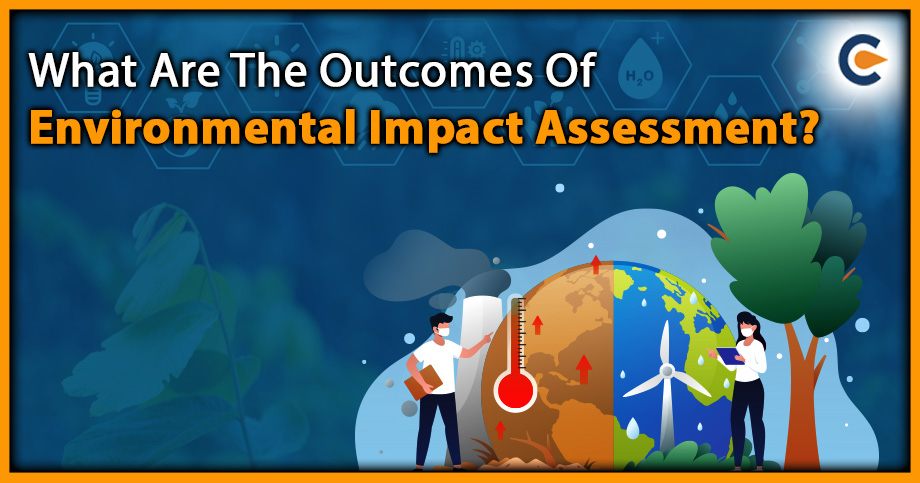The scoping in Environmental Impact Assessment involves a comprehensive assessment of the potential impacts of a project or activity, including direct and indirect impacts, cumulative impacts, and potential long-term effects. This assessment is usually carried out by a team of environmental and social experts, who analyse the proposed project or activity in detail and identify potential risks and impacts on various aspects of the environment, such as air quality, water quality, biodiversity, and cultural heritage. The Environmental Impact Assessment process involves a public consultation process, where members of the public and other stakeholders can provide feedback and raise concerns about the proposed project or activity. The Environmental Impact Assessment report is then submitted to regulatory authorities, who use the information to decide whether to approve the project and under what conditions.
When Should Be Environmental Impact Assessment Be Undertaken?
An Environmental Impact Assessment should be undertaken early in the planning stages of a proposed project or activity before any significant decisions or actions have been made. This allows for potential environmental, social, and economic impacts to be identified and evaluated and for mitigation measures to be developed and incorporated into the project design. For complex projects, the Environmental Impact Assessment process may take several months or even years to complete and may involve multiple stages of review and consultation with stakeholders.
Why Is Scoping Conducted In Environment Impact Assessment?
Scoping is conducted in Environmental Impact Assessment to identify the key issues and potential impacts that should be considered during the assessment process. The scoping process involves identifying and defining the boundaries of the Environmental Impact Assessment and determining the level of detail required in the assessment.
The primary objectives of scoping in Environmental Impact Assessment are as follows:
- To Identify Relevant Environmental and Social Issues: Scoping helps identify the environmental and social issues pertinent to the proposed project or activity.
- To Determine the Scope and Level of Detail of the Environmental Impact Assessment: Scoping helps to ensure that the assessment is focused on the most critical issues and is conducted efficiently.
- To Engage With Stakeholders: Scoping provides an opportunity to engage with stakeholders, including members of the public, non-governmental organisations[1], and other relevant parties.
Process of Scoping In Environment Impact Assessment
The process of scoping in Environmental Impact Assessment is as follows:
- Establishing The Scope Of The Environment Impact Assessment: In this step, the goals and objectives of the Environmental Impact Assessment process are defined and documented.
- Identifying The Key Stakeholders: In this step, identify stakeholders and interested parties who may be affected by the proposed project and who should be consulted during the scoping process.
- Description of The Proposed Project: In this step, describe the project or activity, including its location, scale, and timing. Provide a detailed description of the proposed project and any alternatives that may be considered.
- Identification of The Potential Environmental and Social Impacts: In this step, identify potential environmental and social impacts of the proposed project or activity, including direct, indirect, and cumulative effects.
- Defining The Boundaries Of The Assessment: This step defines the geographic boundaries of the evaluation, including the project area and the area of potential impact.
- Determining the Level of Detail Required: This step assess the level of detail needed for the assessment, including the data that will be required and the methods that will be used to collect and analyse the data.
- Determining The Need For Additional Studies: Determine the need for further studies or assessments to address specific issues identified during the scoping process.
- Establishing A Scoping Report: In this step, prepare that should outline the data that will be required and the methods that will be used to analyse the data.
- Reviewing The Scoping Report: This step reviews the scoping report with stakeholders and interested parties to ensure that all relevant issues and impacts have been identified.
- Applying The Scoping Report To Guide The Environmental Impact Assessment Process: This step uses the scoping report to guide the Environmental Impact Assessment process, including data collection, impact assessment, and the development of mitigation measures.
Conclusion
Environmental Impact Assessment is a process used to identify and evaluate the potential impacts of a proposed project or activity on the environment, social and cultural values, and human health. Scoping in Environmental Impact Assessment helps to identify the key issues and potential impacts that should be considered during the assessment process. It involves specifying the environmental and social issues relevant to the proposed project or activity, outlining project alternatives, conducting public meetings and stakeholder consultations, and defining criteria to assess the planned project/development. It is generally recommended to consult experts in this field to attain proper guidance while conducting scoping in the Environment Impact Assessment.
Also Read:
Types Of Environmental Impact Assessment











